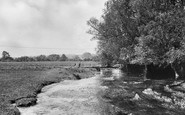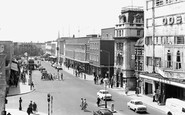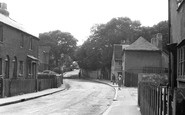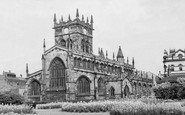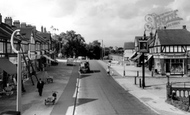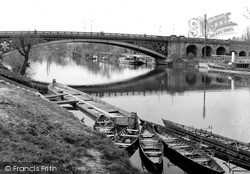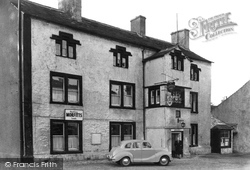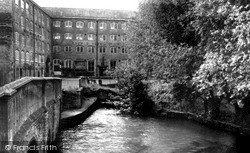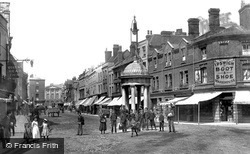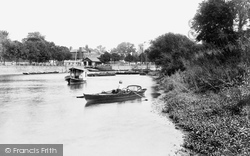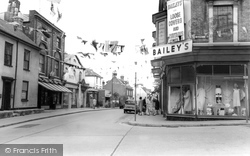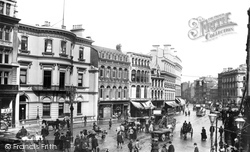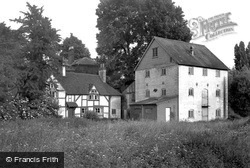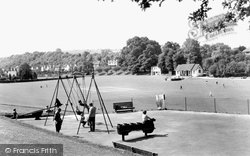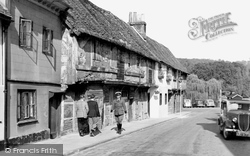Places
17 places found.
Those places high-lighted have photos. All locations may have maps, books and memories.
- Bridge End, Oxfordshire
- Bridge End, Lincolnshire
- Bridge End, Essex
- Bridge End, Bedfordshire
- Bridge End, Clwyd
- Bridge End, Warwickshire
- Bridge End, Surrey
- Bridge End, Durham (near Frosterley)
- Bridge End, Northumberland (near Hexham)
- Bridge End, Hereford & Worcester (near Tirley)
- Bridge End, Hereford & Worcester (near Bosbury)
- Bridge End, Shetland Islands
- Bridge End, Cumbria (near Carlisle)
- Bridge End, Northumberland (near Hexham)
- Bridge End, Devon (near Kingsbridge)
- Bridge End, Devon (near Sidmouth)
- West End, Yorkshire (near Pateley Bridge)
Photos
40 photos found. Showing results 1,461 to 40.
Maps
520 maps found.
Books
2 books found. Showing results 1,753 to 2.
Memories
1,925 memories found. Showing results 731 to 740.
The Old Days
the best years of my life i was born in 5 ruskin rd in the late 40s and early 50s all the kids played in the street istill remember all june cole alan cole kenny grumble georgina grumble lesley and anthea more mickey masterton laurie ...Read more
A memory of Southall in 1950
Childhood Memories Of Old Bracknell 1945 To 1957
I was born in 1945 in my aunty's cottage in Searle Street, which ran from the corner of the Station Hotel below the railway line embankment where we would wave at steam trains as they went past. ...Read more
A memory of Bracknell in 1950 by
A Lovely Devon Village
We moved to No. 6 Tipton Vale in 1950. Maureen a baby, myself (Valerie) and parents Eric and Joan White fom Fenny Bridges. The house was a new council house, pink and blue. Dad dug out a bank at the rear and we found ...Read more
A memory of Tipton St John in 1950 by
Paddling And Picnics
The water meadows have many happy memories. We bought the wired stopper Corona Lemonade in the village shop run at that time by Mrs Hunt. This was carefully carried to the stream and placed in it where the little 'island' is ...Read more
A memory of Chilbolton in 1950
Above Bar Southampton
We moved to Southampton in early 1950 just after the trams had stopped running - some of the rails were still there. Above Bar along with much of the town had been badly bombed in the war and there were many bomb sites on ...Read more
A memory of Southampton in 1950 by
The Real Heart Of Dagenham
We moved to Dagenham from Plaistow in East London when I was two years old. We moved to Leys Avenue, on the Rookery Farm estate. It was out in the sticks then with the remainder of Rookery Farm still in business with cows ...Read more
A memory of Dagenham in 1950 by
Swinging Bridge
What a 'Swinging Bridge' it was at Merthyr Mawr back in the 1050s! I don't know when it was changed to a 'solid' bridge, but how it ever survived the rough handling that we 'Cottage Homes Boys' gave it every year...Well! ...Read more
A memory of Merthyr Mawr in 1950 by
Wigan In 1950 To 1964
I was born in Queen Street, off Wallgate Street, in 1949 and lived in Queen Street till late 1959. I remember going to see Wigan rugby play Workington at Wembley 1958 and in 1959 beating Hull. I attended the Wesleyan Methodist ...Read more
A memory of Wigan in 1950 by
Barnehurst In The Late 40s/50s
I still live in Barnehurst having moved back in 1947. The picture of Barnehurst Road, although the scenery hasn't changed much the shops have. The corner shop on the right was United Dairies and there was a butchers ...Read more
A memory of Barnehurst in 1950 by
Graig Y Merched
Hello Ystalyfera! I have just discovered your site and I am ecstatic! Having been born and brought up on Graig-y-Merched in the 1950s and 1960s, I have loved your photos. Having 'emigrated' to Baglan a mere 26 years ago (not through ...Read more
A memory of Ystalyfera in 1950 by
Captions
1,770 captions found. Showing results 1,753 to 1,776.
From the bridge it was once possible to see a windmill built on a high bluff of rock above the river.
By 1958 cheap Italian and Japanese textiles were being dumped on the market and countries like Canada and the US had placed a tariff on British cloth.
The busy A59 road now divides Gisburn, but it still has its cobbled forecourts and white cottages in the main street. Here we will find the Ribblesdale Arms.
St John's Bridge is on the left. The Avon Mill at this time was occupied by Hugh Dryden & Co Ltd, who sold antiques and works of art here until the late 1970s.
Belfast had a very effective body managing and improving its harbour long before it had a council able to provide roads, drainage and oversee housing.
The tenements could only expand lengthways along their own ‘backsides’, and most buildings had a jumble of outhouses, barns and sheds at the rear.
Prize money of 300 guineas was announced for a competition in 1866 to design and lay out an area for 'the delight and pleasure of the public'.
The local population in the Middle Ages made a living from agriculture, fishing, boat-building, and ferrying traffic up and down the river.
It was once Shergold's grocery, and still has beautiful tiles on the walls.
AND SO, with the new millennium, to modern times. It cannot be claimed that Stafford celebrated the event with much originality or enthusiasm.
It was built by Sir William Stradling during the reign of Edward III, and remodelled during the Tudor period. There are two wards, the outer defended by a gatehouse with a portcullis.
This had already been the capital of the Trinovantes, the tribe whose territory covered Essex and east Suffolk.
The horse-drawn trams were a long-established feature of the city, and the system was still being extended up the Cregagh and Anderstown Roads.
The new mills and factories not only changed the skyline of Carlisle: they had a radical impact upon the very nature of the city.
The estate dates to the early 13th century, and was owned by William de Polesdene. It was later occupied by Thomas Slyfield, and was granted to John Norbury in 1470.
Walsall has always adapted to changing economic climates and consumer demand, from its first industries in limestone, coal mining and metalwork through to the leather trade and now retailing.
.` In 1962 Mrs C Nicholls, born in 1872, recalled walking to St John`s School, Bradmore Green from Hooley: `We used to walk up to the Star [near Star Lane], turn left over the railway bridge
The town also acquired that other symbol of Georgian respectability and status: Assembly Rooms, in Bell Street.
Places (17)
Photos (40)
Memories (1925)
Books (2)
Maps (520)

